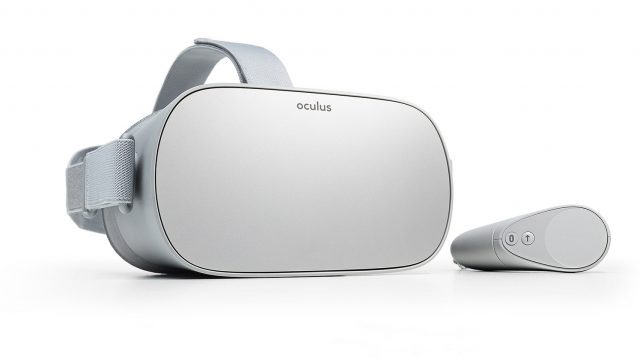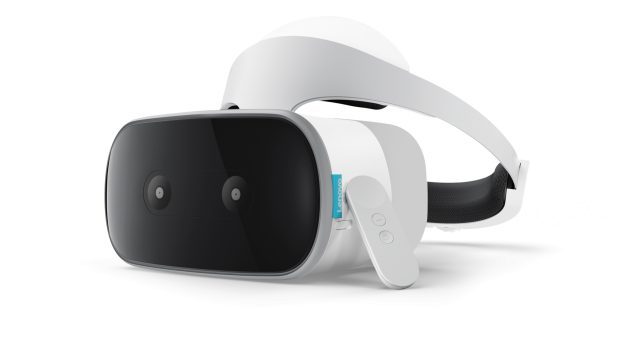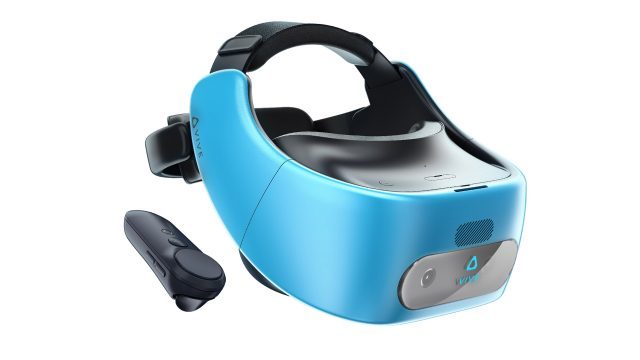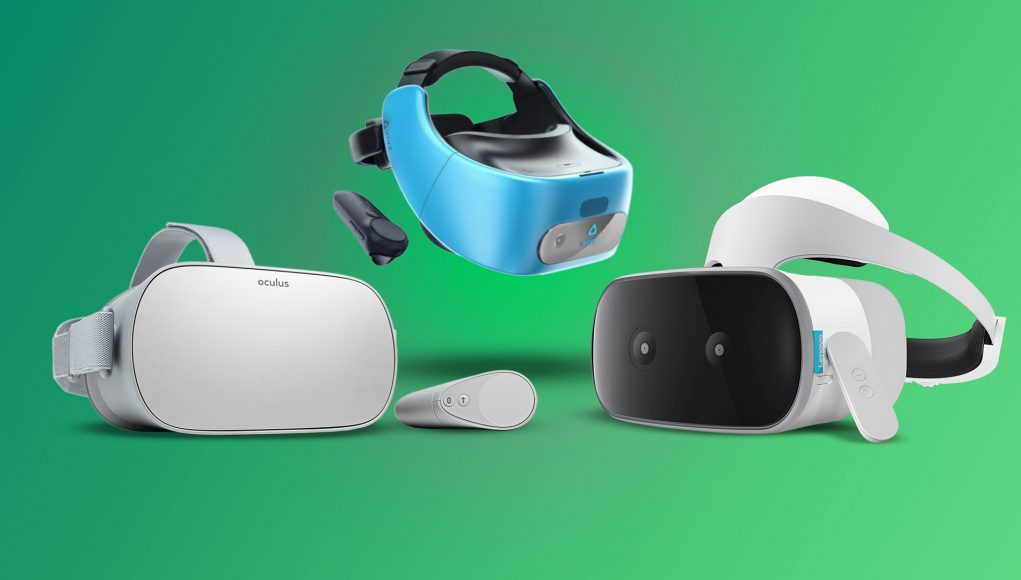Standalone VR headsets represent a new headset segment that sits somewhere between smartphone-based VR devices, and tethered, high-end VR systems, while offering some notable advantages over both. In this article we compare three standalone VR devices which will be available worldwide this year: the Oculus Go, Lenovo Mirage Solo, and HTC Vive Focus.
The main appeal of standalone VR is the self-contained hardware design. By integrating the processor, battery, and all the required visual, audio, and tracking technology into the headset, they provide the tetherless freedom of mobile VR in an optimised design that breaks free of the constraints of smartphones. In the future, standalone VR could offer something closer to current high-end VR—Oculus Santa Cruz features a Rift-like design and dual 6DOF controllers, and Qualcomm’s latest Snapdragon 845 reference design supports dual 6DOF controllers using an ultrasonic solution—but the three headsets covered below are less sophisticated, while some have 6DOF head-tracking, all featuring a single 3DOF controller which stands as a limiting factor compared to the types of experiences you’d expect from the high-end PC and console headsets.
Oculus Go – Value Oriented

At $200, the Oculus Go is set to be the most affordable device of the three by a significant margin. This compelling price point is the result of some key hardware decisions, most notably the omission of positional (6DOF) tracking. Using rotational (3DOF) headset tracking, and including a single 3DOF controller with a trigger, trackpad, a couple of buttons, the hardware and software essentially operates like a Samsung Gear VR, and will share the same library of games and apps from Oculus.
For owners of a compatible Samsung smartphone, the Gear VR shell remains the best value proposition, but for everyone else, the Go will be the cheapest way to access Gear VR content. And thanks to its dedicated design, the Go is also expected to offer a better experience than any Gear VR, with superior ergonomics, performance, and visuals. Its “next generation” Fresnel lenses offer a larger field of view than a Gear VR, and the 1,280 × 1,440 (per eye) “fast-switch LCD” can be clocked at 72Hz rather than the standard 60Hz, giving some applications an extra boost in visual performance. Given that this headset uses a single display, there’s no IPD adjustment available.
According to the official site, the price is “starting at $199” and the release date is “early 2018.” It has been suggested that the launch date could coincide with Facebook’s F8 conference, which begins May 1st.
Want to know more? Check out Everything We Know About Oculus Go (so far).
Lenovo Mirage Solo – Premium Daydream VR

Based on Google’s standalone Daydream VR reference design, the Mirage Solo could be seen as the Daydream version of the Oculus Go, in that it is a dedicated device, sharing the same VR app library with Daydream-ready smartphones.
The Mirage Solo’s $400 price point puts it a twice the cost of the go, and there are two clear reasons why: it uses a more powerful Snapdragon 835 SoC, and it features 6DOF inside-out headset tracking. This means instead of being limited to rotational movement, you’ll be able to lean in all directions, and even physically walk around, which could be a significant advantage if apps can be built with more movement in mind. However, the controller is still limited to 3DOF tracking, and the current Daydream library is optimised for a 3DOF tracking experience. This means that the inclusion of 6DOF might not result in a dramatic change in app design (at least in the short term), but it is a certainly a welcome feature for comfort and immersion; positional tracking simply feels more natural in all scenarios, including seated experiences.
Much like the Oculus Go, the Mirage Solo also uses a 1,280 × 1,440 (per eye) LCD operating at a higher refresh rate than the various 60Hz Daydream-ready smartphones, in this case at 75Hz. And similarly, the dedicated design has many optimisations for comfort and performance, with Fresnel lenses offering a wider field of view than typical mobile VR headsets. Like the Oculus Go, there’s no IPD adjustment available on the Solo because it uses a single display.
The Mirage Solo is due to launch on May 5th in the US, priced at $400.
Want to know what it’s like to use the Mirage Solo? Check out our latest hands-on for a detailed look.
HTC Vive Focus – Best-in-Class Displays and new Content Platform

Much like the Mirage Solo, the Vive Focus features inside-out 6DOF tracking for the headset, and a single, 3DOF controller. It is also based on the same Qualcomm Snapdragon 835 SoC. However, HTC believes the Focus is the more “premium” option, as it uses the same lenses and displays as the Vive Pro, albeit running at 75Hz rather than 90Hz. The Vive Focus offers best-in-class resolution with its dual 1,600 × 1,440 OLED panels, and a physical IPD adjustment which lets users dial in the position of the lenses to match the width between their eyes—both notable features over the Go and Mirage Solo.
As we’ve seen on PC with the Vive Pro, these displays require serious horsepower to take full advantage of the higher resolution, which could explain why the Focus also contains a fan to actively cool the Snapdragon 835 chip, which will surely be under more strain in certain rendering situations than the Mirage Solo.
One place where the Vive Focus is likely in need of catching up compared to the Oculus Go and Mirage Solo is in the content department. While the Go taps into the pre-existing library of Gear VR content and the Mirage Solo uses Daydream, HTC is spinning up a new content ecosystem for the Focus, a mobile version of their Viveport VR app store. Only so far open to the Asian market for a few months by now, we expect it’ll take time for HTC to curate the same breath and quality of mobile VR apps seen from Oculus and Daydream.
The Vive Focus is already available in China, and based on the exchange rate could launch in the US at around $525; HTC plans a slower rollout in Western markets, initially making the headset available as a development kit.







